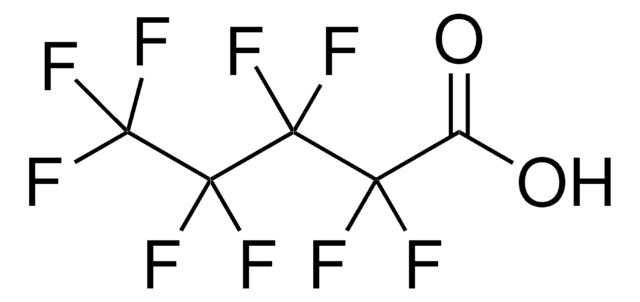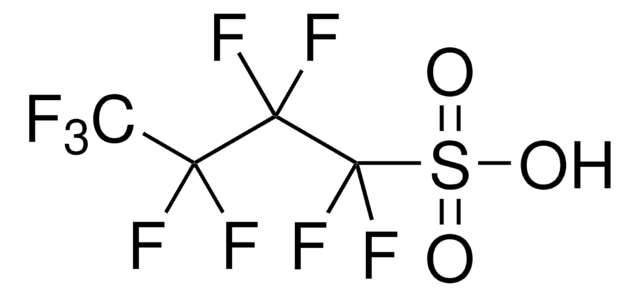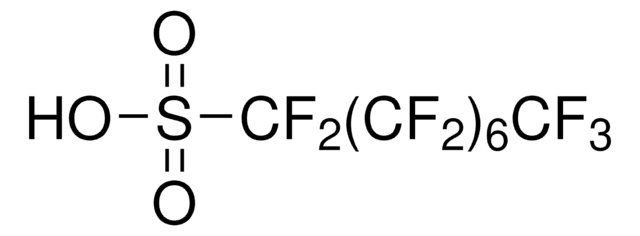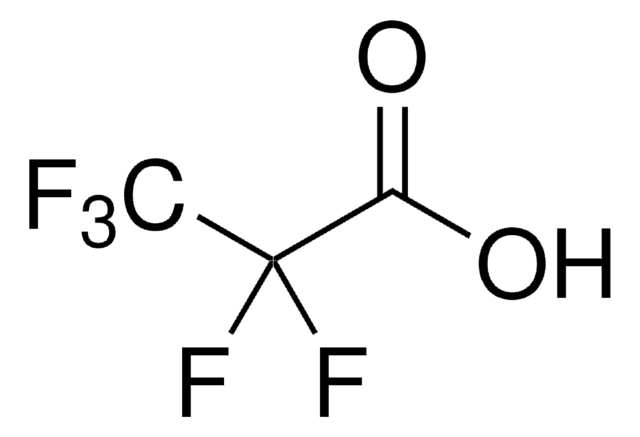342041
Perfluoroheptanoic acid
≥97.0%
Synonym(s):
Tridecafluoroheptanoic acid, Perfluoroheptanoic acid
About This Item
Recommended Products
Quality Level
assay
≥97.0%
form
solid
refractive index
n20/D 1.306 (lit.)
bp
175 °C/742 mmHg (lit.)
mp
30 °C (lit.)
density
1.792 g/mL at 25 °C (lit.)
SMILES string
OC(=O)C(F)(F)C(F)(F)C(F)(F)C(F)(F)C(F)(F)C(F)(F)F
InChI
1S/C7HF13O2/c8-2(9,1(21)22)3(10,11)4(12,13)5(14,15)6(16,17)7(18,19)20/h(H,21,22)
InChI key
ZWBAMYVPMDSJGQ-UHFFFAOYSA-N
Looking for similar products? Visit Product Comparison Guide
Application
- For the fluoroalkylation of C-H bonds of aromatic compounds using Ni/SiO2 nanocatalyst.
- To synthesize biphenylyl benzoates via Mitsunobu reaction.
- To synthesize N-perfluoracyl β-thioamides from β-thio amines in the presence of methyl chloroformate.
signalword
Danger
hcodes
Hazard Classifications
Repr. 1B - STOT RE 1
target_organs
Liver
Storage Class
6.1C - Combustible acute toxic Cat.3 / toxic compounds or compounds which causing chronic effects
wgk_germany
WGK 3
flash_point_f
Not applicable
flash_point_c
Not applicable
ppe
Eyeshields, Faceshields, Gloves, type P3 (EN 143) respirator cartridges
Choose from one of the most recent versions:
Already Own This Product?
Find documentation for the products that you have recently purchased in the Document Library.
Customers Also Viewed
Our team of scientists has experience in all areas of research including Life Science, Material Science, Chemical Synthesis, Chromatography, Analytical and many others.
Contact Technical Service










